Вы здесь
Coronavirus During Pregnancy and Cord Blood Banking
Many people have contacted Parent’s Guide to Cord Blood Foundation with questions about the novel coronavirus COVID-19. We have assembled a summary of Frequently Asked Questions for parents and professionals.
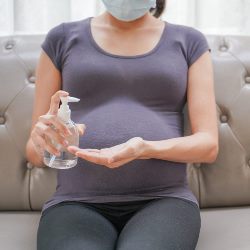
The professional society of obstetricians in the United States, ACOG, says that the data available at this time does not indicate that pregnant women are at increased risk of catching COVID-191. However, when pregnant women do contract respiratory infections, they are known to be at greater risk for experiencing severe symptoms. Hence, pregnant women “should be considered an at-risk population for COVID-19”1. If you are pregnant during the coronavirus pandemic, you should follow strict precautions to avoid exposure to COVID-19. If you are pregnant and suspect that you have COVID-19, you should tell your doctor immediately.
It is important to point out that the novel coronavirus COVID-19 is not a flu virus2. Nonetheless, the symptoms of COVID-19 are similar to flu and the way it spreads is similar to flu, so in this report we base part of our guidance on previous research about pregnancy and flu viruses.
 During pregnancy, changes occur in the immune system to prevent the mother’s body from recognizing her baby as foreign and attacking it. But these changes mean that pregnant women have lower immunity to disease3. Pregnant women also have increased loads on their heart and lungs. A healthy woman that is pregnant has an increased risk of being hospitalized with the flu; during the first, second, and third trimester of pregnancy the risk of hospitalization increases by a factor of 1.7, 2.1, and 5.13. When the pregnant woman has preexisting health conditions, like diabetes or asthma, the increased risk factors are 2.9, 3.4, and 7.9 for the three trimesters3.
During pregnancy, changes occur in the immune system to prevent the mother’s body from recognizing her baby as foreign and attacking it. But these changes mean that pregnant women have lower immunity to disease3. Pregnant women also have increased loads on their heart and lungs. A healthy woman that is pregnant has an increased risk of being hospitalized with the flu; during the first, second, and third trimester of pregnancy the risk of hospitalization increases by a factor of 1.7, 2.1, and 5.13. When the pregnant woman has preexisting health conditions, like diabetes or asthma, the increased risk factors are 2.9, 3.4, and 7.9 for the three trimesters3.
If an expectant mother becomes severely sick with the flu, there is an increased risk of miscarriage or premature labor3-6. A small study of 10 births in China found that maternal COVID-19 pneumonia at the time of birth was associated with fetal distress and premature labor7. Again, if you are pregnant and suspect you have COVID-19, you should tell your doctor immediately.
 While a baby is still in the womb, the placenta works to protect the baby against disease. The placenta is an amazing organ that allows antibodies to pass from the mother to the baby, but most of the time the placenta blocks diseases from crossing to the baby8,9.
While a baby is still in the womb, the placenta works to protect the baby against disease. The placenta is an amazing organ that allows antibodies to pass from the mother to the baby, but most of the time the placenta blocks diseases from crossing to the baby8,9.
In the case of ordinary influenza, aka the “flu”, a large hospital study found no evidence for trans-placental transmission of the infection from mother to baby10.
In the case of COVID-19, initial studies coming out of China suggest that the coronavirus may sometimes be transmitted from mother to baby, but it will take more studies of bigger patient groups to confirm this. The most often quoted study11 from Wuhan China looked at 33 babies born to mothers that were sick with the coronavirus. Three of these babies were diagnosed with COVID-19 as newborns, even though they were delivered via C-section. Despite suffering from fevers and pneumonia shortly after birth, all three babies recovered and tested negative for COVID-19 by age one week.
After giving birth, a mother that is actively sick with COVID-19 can transmit the virus to her newborn through close contact. In that situation it is helpful for the mother pump her milk and have another caregiver feed and handle the baby until mom is recovered.
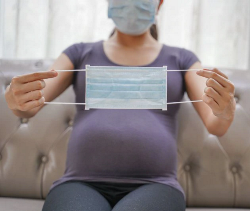 To the best of our knowledge, the umbilical cord blood will not contain COVID-19, even if the mother is sick at the time of delivery. It is important to clarify that there is a difference between studies that look for COVID-19 disease transmission between mother and baby, versus studies that test for signs of COVID-19 in the cord blood; these are two separate topics.
To the best of our knowledge, the umbilical cord blood will not contain COVID-19, even if the mother is sick at the time of delivery. It is important to clarify that there is a difference between studies that look for COVID-19 disease transmission between mother and baby, versus studies that test for signs of COVID-19 in the cord blood; these are two separate topics.
When a person is sick with a respiratory virus, it is very rare for the virus to appear in their blood3,10,12. The patient’s blood will show antibodies to the virus, but not the virus itself. For this reason, the FDA does not recommend13 tests to screen asymptomatic blood donors for COVID-19. It is extremely unlikely for COVID-19 to appear in cord blood.
A 2006 study12 sponsored by the American Red Cross is almost prescient in describing the current COVID-19 pandemic. The paper predicts that during a flu pandemic, donated blood will be safe, but there will be a blood shortage due to disruption of blood center operations. That is exactly what is happening now, and in response the FDA has relaxed their restrictions on blood donors14.
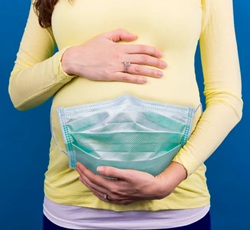 Further reassurance that COVID-19 does not appear in the umbilical cord blood or birth tissues comes from a study15 of nine births in Wuhan China. The nine mothers were all suffering from COVID-19 pneumonia, and their babies were delivered via C-section. While the babies were still in the sterile operating room, and before they had contact with their mothers, samples were collected of their amniotic fluid, cord blood, and neonatal throat swabs. Later the mother’s breastmilk was collected. All of these samples tested negative for COVID-19, using both the CDC test and the hospital’s in-house RT-PCR test15.
Further reassurance that COVID-19 does not appear in the umbilical cord blood or birth tissues comes from a study15 of nine births in Wuhan China. The nine mothers were all suffering from COVID-19 pneumonia, and their babies were delivered via C-section. While the babies were still in the sterile operating room, and before they had contact with their mothers, samples were collected of their amniotic fluid, cord blood, and neonatal throat swabs. Later the mother’s breastmilk was collected. All of these samples tested negative for COVID-19, using both the CDC test and the hospital’s in-house RT-PCR test15.
Hence, if a mom has COVID-19 during her pregnancy or even during birth, she does not need to worry that the virus will be present in the umbilical cord blood or the tissues of the placenta and umbilical cord.
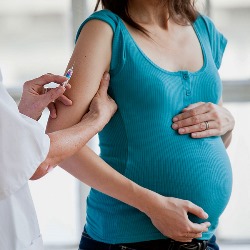 Once again, the placenta is amazing: at the same time that it protects the baby from disease, it allows antibodies from the mother to cross into the baby’s blood8,9. The baby inherits its mother’s immune system and has resistance to most diseases that mom resists until about age six months.
Once again, the placenta is amazing: at the same time that it protects the baby from disease, it allows antibodies from the mother to cross into the baby’s blood8,9. The baby inherits its mother’s immune system and has resistance to most diseases that mom resists until about age six months.
If the mother has immunity to COVID-19, most likely so will the newborn baby. Any woman who has had the coronavirus and recovered from the illness is carrying protective antibodies. A small study in Wuhan China confirmed that, when 6 mothers who were sick with COVID-19 pneumonia gave birth, all of their babies had antibodies to COVID-19 in their blood16.
Hopefully someday there will be a vaccine against COVID-19, and if mom has received the vaccine it should protect her newborn too. Studies have shown that seasonal influenza vaccines given to pregnant women have greatly reduced newborn flu infections, and the vaccine is effective when given at least two weeks before birth5,6.
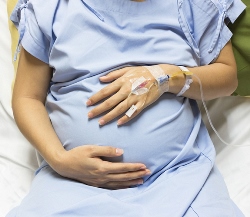 Yes, cord blood banks have modified their maternal health history forms to ask about possible exposure to COVID-19, even though the virus is not expected to appear in the umbilical cord blood or the tissues of the afterbirth. The philosophy is to collect the information now in case it becomes important later.
Yes, cord blood banks have modified their maternal health history forms to ask about possible exposure to COVID-19, even though the virus is not expected to appear in the umbilical cord blood or the tissues of the afterbirth. The philosophy is to collect the information now in case it becomes important later.
Most public banks that collect cord blood donations have had to modify their procedures due to COVID-19, simply to reduce person-to-person contact. For example, maternal consent interviews might be conducted by telephone. If you are planning to donate your baby’s cord blood or placenta, check in advance to find out how the program at your delivery hospital is operating.
Family cord blood banks have not had to change their collection procedures, because the cord blood is collected by the staff that will be in the delivery room anyway.
 Cord blood banks are essential services that continue to operate during shelter in place orders. Ironically, COVID-19 has not required any changes to the laboratory operations of cord blood banks, but the banks have had to make accommodations to their logistics and personnel management.
Cord blood banks are essential services that continue to operate during shelter in place orders. Ironically, COVID-19 has not required any changes to the laboratory operations of cord blood banks, but the banks have had to make accommodations to their logistics and personnel management.
Once cord blood or birth tissue arrives in a laboratory for processing, it is managed with standard protections against blood borne pathogens. These include staff wearing personnel protective equipment and handling the blood and tissue samples under a hood that maintains a sterile field. Therefore, it is not necessary to take any additional precautions.
However, the shipping of the collection kit to the laboratory can be fraught with difficulty during this pandemic, especially if the kit needs to travel long distance or cross international borders. Parents should talk to their bank to plan around these logistics. Most hospitals are restricting entry to only allow patients and staff, which means that medical couriers cannot pick up collection kits at the bedside. There have been reports that often someone close to the mother must walk the kit out of the hospital to the courier.
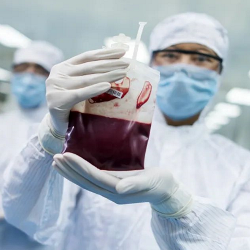 When a collection kit containing cord blood or birth tissue arrives in a laboratory, it is placed in a special receiving zone, away from regular working areas in case the outside of the kit is contaminated with coronavirus. Designated personnel carefully open the kits and transfer the cord blood and tissue samples to the laboratory.
When a collection kit containing cord blood or birth tissue arrives in a laboratory, it is placed in a special receiving zone, away from regular working areas in case the outside of the kit is contaminated with coronavirus. Designated personnel carefully open the kits and transfer the cord blood and tissue samples to the laboratory.
The biggest concern that cord blood banks are struggling with at this time is the possibility that their staff will become sick with COVID-19. A worst case scenario would be a staff member infecting others at work. To guard against this, laboratory technicians have been assigned to teams that do not have contact with each other. Even if an entire team is exposed and has to be quarantined, the other teams can keep working. Common areas at the work place, such as locker rooms or break rooms, are cleaned repeatedly with medical grade disinfectant. Staff members either work remotely or stay socially distant.
During the COVID-19 pandemic, many parents are more mindful of ways that they can protect their baby’s health, and as a result we have seen a spike in inquiries about cord blood banking. Nonetheless, the long-term odds of using your child’s cord blood or birth tissues have not been changed by COVID-19. The basic motivation for banking cord blood is that it can benefit patients in need of donors or it can be a form of health insurance for your family.
Links to Resources:
- AABB: Coronavirus and Blood Donation
- ACOG: American College of Obstetricians and Gynecologists (ACOG) Practice Advisory
- ASH: American Society of Hematology COVID-19 Resources
- ASTCT: American Society for Transplantation and Cellular Therapy COVID-19 Interim Patient Care Guidelines
- Be The Match: Response to COVID-19
- CDC: Coronavirus (COVID-19) | Pregnancy and Breastfeeding
- COVIDplasma.org: How to donate COVID-19 convalescent plasma
- FACT: Foundation for the Accreditation of Cellular Therapy COVID-19 Update
- FDA: Updated Information for HCT/P Establishments Regarding the Coronavirus 2019 Pandemic
- Flourish: COVID-19: free live mobile-friendly visualizations
- MassGen: Massachusetts General Hospital | Coronavirus (COVID-19) During Pregnancy
- JHU-CSSE: Johns Hopkins University COVID-19 global case tracker
- Red Cross: Staying Safe and Helping Others During COVID-19
- WHO: Q&A on COVID-19, pregnancy, childbirth and breastfeeding
- WMDA: World Marrow Donor Association Medical Suitability Recommendations
References:
- ACOG Clinical Guidance. Novel Coronavirus 2019 (COVID-19). Practice Advisory. Last updated 2020-03-13
- Maragakis LL. Coronavirus Disease 2019 vs. the Flu Johns Hopkins website sourced 2020-04-08
- Rasmussen SA, Jamieson DJ, and Uyeki TM. Effects of influenza on pregnant women and infants. American Journal of Obstetrics and Gynecology 2012; 207(3-Supplement):S3-S8.
- Harris JW. Influenza occurring in pregnant women. A statistical study of thirteen hundred and fifty cases. JAMA. 1919; 72(14):978-980.
- Tamma PD, Steinhoff MC, and Omer SB. Influenza infection and vaccination in pregnant women. Expert Rev. Resp. Med. 2010; 4(3):321-328.
- Blanchard-Rohner G, Meier S, Bel M, Combescure C, Othenin-Girard V, Swali RA, de Tejada BM, and Siegrist CA. Influenza Vaccination Given at Least 2 Weeks Before Delivery to Pregnant Women Facilitates Transmission of Seroprotective Influenza-specific Antibodies to the Newborn. The Pediatric Infectious Disease Journal 2013; 32(12):1374-1380.
- Zhu H, Wang L, Fang C, Peng S, Zhang L, Chang G, Xia S, and Zhou W. Clinical analysis of 10 neonates born to mothers with 2019-nCoV pneumonia. Translational Pediatrics 2020; 9(1):51-60.
- Cetrulo CL, and Cetrulo KJ. Placental and pregnancy stem cells: everyone is, or should be, interested in the placenta. Stem Cell Reviews 2006; 2(2):79-80.
- Simister NE. Placental transport of immunoglobulin G. Vaccine 2003; 21(24):3365-3369.
- Irving WL, James DK, Stephenson T, Laing P, Jameson C, Oxford JS, Chakraverty P, Brown DWG, Boon ACM, and Zambon MC. Influenza virus infection in the second and third trimesters of pregnancy: a clinical and seroepidemiological study. British Journal of Obstetrics and Gynecology 2000; 107(10):1282-1289.
- Zeng L, Xia S, Yuan W, Yan K, Xiao F, Shao J, and Zhou W. Neonatal Early-Onset Infection With SARS-CoV-2 in 33 Neonates Born to Mothers With COVID-19 in Wuhan, China. JAMA Pediatrics 2020;
- Zou S. Potential Impact of Pandemic Influenza on Blood Safety and Availability. Transfusion Medicine Reviews 2006; 20(3):181-189.
- FDA. Updated Information for Human Cell, Tissue, or Cellular or Tissue-based Product (HCT/P) Establishments Regarding the Coronavirus Disease 2019 Pandemic. web page Released 2020-04-01
- Allyn B. FDA Loosens Restrictions On Gay Blood Donors Amid 'Urgent Need' Caused By Coronavirus. NPR 2020-04-02
- Chen H, Guo J, Wang C, Luo F, Yu X, Zhang W, Li J, Zhao D, Xu D, Gong Q, Liao J, Yang H, Hou W, and Zhang Y. Clinical characteristics and intrauterine vertical transmission potential of COVID-19 infection in nine pregnant women: a retrospective review of medical records. The Lancet 2020; 395:809-815.
- Zeng H, Xu C, Fan J, Tang Y, Deng Q, Zhang W, and Long X. Antibodies in Infants Born to Mothers With COVID-19 Pneumonia JAMA 2020; doi:10.1001/jama.2020.4861


